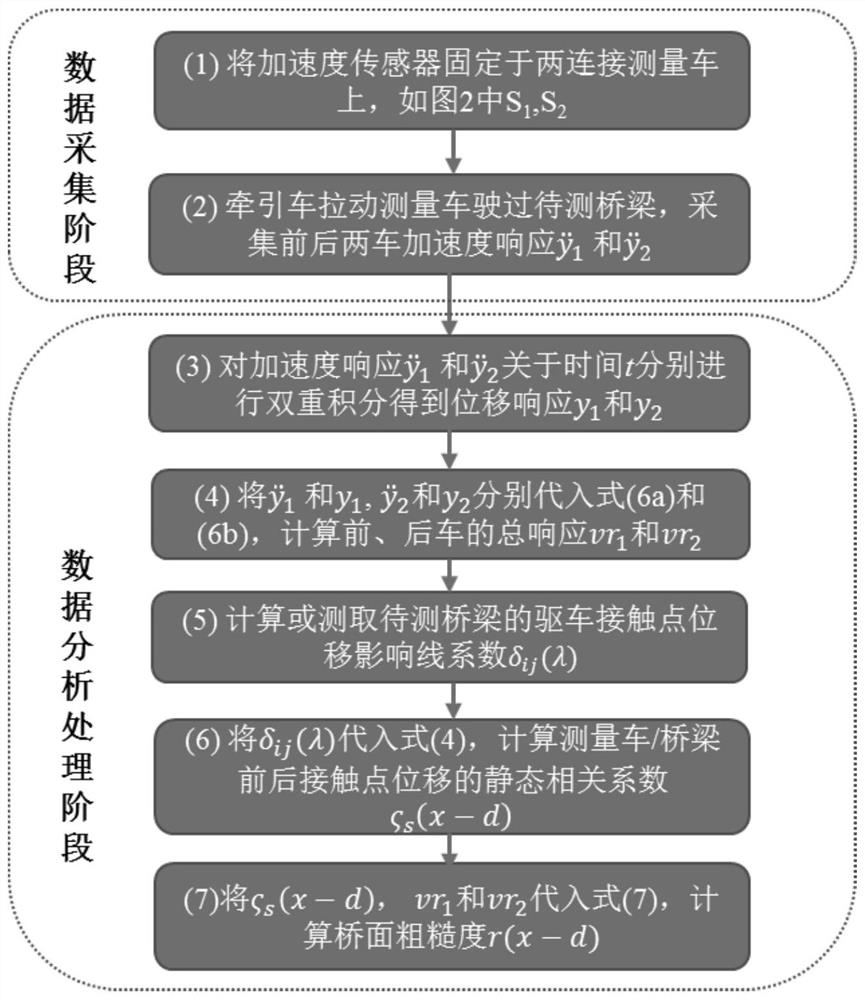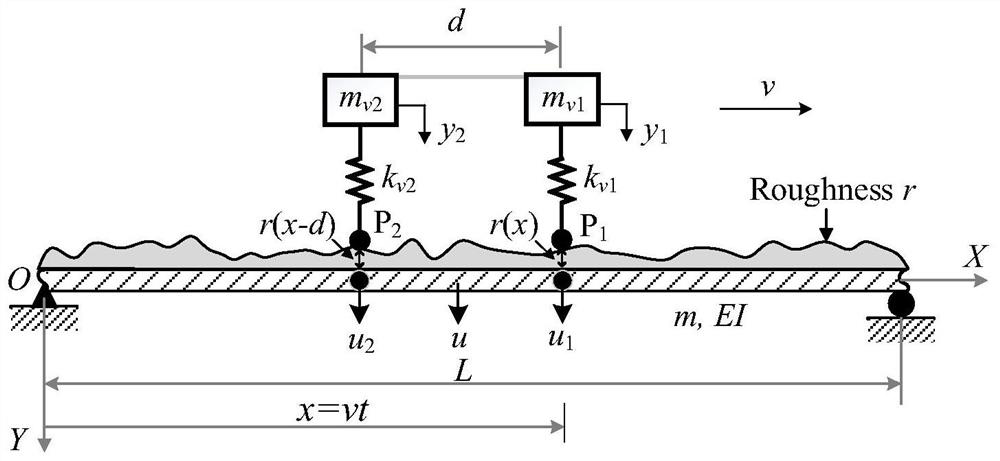Bridge floor roughness identification method based on two-connected measurement vehicle vibration signals
An identification method and vibration signal technology, applied in measuring devices, instruments, using ultrasonic/sonic/infrasonic waves, etc., can solve the problems of universal measurement, high-cost operation technology, and difficulty in effectively solving the huge demand of road bridges, etc. question
- Summary
- Abstract
- Description
- Claims
- Application Information
AI Technical Summary
Problems solved by technology
Method used
Image
Examples
Embodiment 1
[0046] A method for identifying the roughness of a bridge deck based on the vibration signal of a two-connection measuring vehicle, which is characterized in that it comprises the following steps:
[0047] (1) Install two acceleration sensors connected to the measuring vehicle system: set the acceleration sensor S 1 , S 2 They are respectively fixed to the position of the carriage directly above the center of the front and rear wheel axles (or respectively fixed to the center positions of the front and rear wheel axles), see attached figure 2 ;
[0048] (2) The tractor equipment provides system power to pull the two connected measuring vehicle systems to drive across the bridge under test at a constant speed, and the signal acquisition system separately collects the vertical acceleration response of the front and rear single-axle vehicles included in the measuring vehicle system during the bridge crossing process. versus The dynamic balance equation of the front and rear two cars ...
PUM
 Login to View More
Login to View More Abstract
Description
Claims
Application Information
 Login to View More
Login to View More - R&D
- Intellectual Property
- Life Sciences
- Materials
- Tech Scout
- Unparalleled Data Quality
- Higher Quality Content
- 60% Fewer Hallucinations
Browse by: Latest US Patents, China's latest patents, Technical Efficacy Thesaurus, Application Domain, Technology Topic, Popular Technical Reports.
© 2025 PatSnap. All rights reserved.Legal|Privacy policy|Modern Slavery Act Transparency Statement|Sitemap|About US| Contact US: help@patsnap.com



